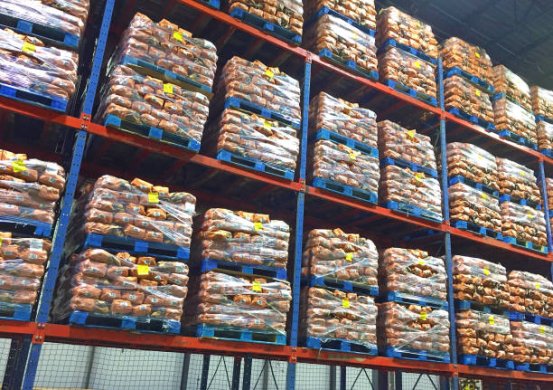Efficient Warehouse Management with Advanced Racking Systems
Effective storage management is critical for businesses aiming to cut costs, improve efficiency, and enhance overall productivity. Modern warehouse racking systems provide organized, accessible storage solutions that maximize available space, improve inventory handling, and support operational excellence.
Effective storage management is critical for businesses aiming to cut costs, improve efficiency, and enhance overall productivity. Modern warehouse racking systems provide organized, accessible storage solutions that maximize available space, improve inventory handling, and support operational excellence.

Understanding Warehouse Racking
Warehouse racking systems are engineered structures designed to securely store goods on pallets or shelving units. Comprising vertical frames and horizontal beams, they create multiple storage levels that facilitate organized inventory placement and rapid retrieval. As essential infrastructure in warehouse management, racking systems help maintain product safety, accessibility, and systematic order throughout the facility.
Diverse Types of Warehouse Racking Systems
To meet different operational requirements, warehouses can choose from several racking configurations:
-
Selective Racking – The most prevalent system, offering direct access to every pallet, ideal for fast-moving inventory.
-
Drive-In/Drive-Through Racking – Enables forklifts to drive into pallet lanes, optimizing space density.
-
Push Back Racking – Uses inclined rails for storing pallets in a high-density configuration while preserving accessibility.
-
Pallet Flow Racking – Incorporates gravity rollers to move items efficiently, perfect for high-turnover inventory.
-
Cantilever Racking – Suitable for long, bulky, or oversized items like pipes, lumber, or furniture, with open-front access.
-
Double-Deep Racking – Back-to-back pallet storage, increasing density but requiring specialized equipment.
Enhancing Efficiency and Productivity
Warehouse racking transforms vertical and underutilized space into productive storage, significantly improving operational efficiency. Organized systems reduce retrieval times, accelerate order processing, and enhance labor productivity. Additionally, robust racking structures minimize product damage, lowering replacement costs and preventing workflow disruptions caused by mishandling or disorganization.
Key Benefits of Warehouse Racking
Implementing racking systems offers multiple operational advantages:
-
Customizable Layouts – Designed to accommodate specific warehouse dimensions and needs.
-
Operational Flexibility – Adjustable to support changing inventory types and storage demands.
-
Space Optimization – Maximizes both vertical and horizontal storage potential.
-
Enhanced Safety – Systematic storage reduces the risk of accidents and damage.
-
Improved Accessibility – Streamlines retrieval and order fulfillment processes.
Maintaining Warehouse Rack Safety
Safety is a vital consideration in warehouse operations. Recommended practices include:
-
Regular Inspections – Check racks for damage, wear, or potential weak points.
-
Adherence to Weight Limits – Avoid overloading racks to prevent structural failure.
-
Staff Training – Educate personnel on safe loading, unloading, and handling procedures.
-
Clear and Organized Aisles – Maintain obstruction-free walkways for safety and efficiency.
-
Scheduled Maintenance – Conduct routine repairs to prevent accidents and downtime.
Choosing the Optimal Racking System
Selecting the appropriate racking solution requires evaluating warehouse layout, inventory volume, and operational workflow. Partnering with experts can ensure that the system accommodates current storage needs while allowing flexibility for future growth.
Investing in warehouse racking is a strategic decision that impacts productivity, safety, and operational efficiency. By carefully assessing requirements, choosing the right racking configuration, and adhering to best practices, businesses can achieve long-term cost savings, maximize storage capacity, and streamline warehouse management.
https://www.shipbob.com/blog/warehouse-rack/
https://www.exotec.com/types-of-warehouse-racking-differences-and-benefits/
